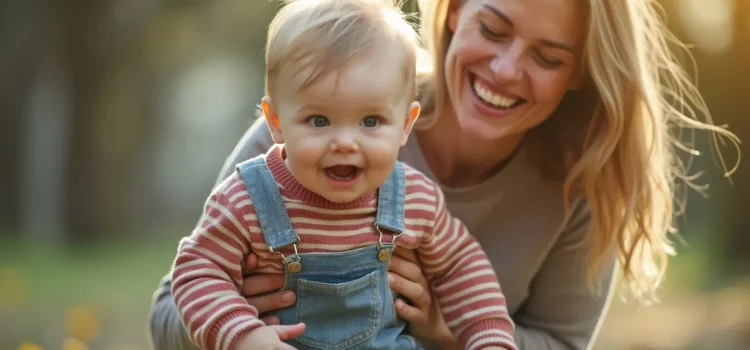

This article is an excerpt from the Shortform book guide to "Awe" by Dacher Keltner. Shortform has the world's best summaries and analyses of books you should be reading.
Like this article? Sign up for a free trial here.
What creates the most powerful realizations of awe in our daily lives? How can witnessing or experiencing certain moments spark wonder and transformation?
From childbirth to acts of everyday heroism, human experiences offer countless opportunities for awe and amazement. These awe moments shape our perspective, deepen our connections, and help us find meaning in both ordinary and extraordinary circumstances.
Read on to discover how life’s natural cycles and human interactions can open your eyes to wonder.
Awe Moments in Life
In all of Dacher Keltner’s research, he found that one source of awe was by far more common than any of the others—awe brought about by the lives of other people. Keltner records that, across cultural boundaries, most of our realizations of awe and wonder are tied to the cycle of human life itself, from birth to death and the astounding things we do between.
Keltner argues that human childbirth and development are unique in the animal kingdom. Since human infants are especially vulnerable, raising children brings with it many awe moments, such as when a child takes her first steps. Even more than these, people often feel awe during childbirth, which can trigger profound shifts of perspective regarding life, responsibility, and interpersonal connection. In childhood, the sense of wonder goes both ways—children feel awe as they first explore their world, and adults get to see the world through their eyes. Therefore, Keltner argues the importance of providing children with many chances to experience awe for themselves.
(Shortform note: Despite the benefits Keltner lists for cultivating awe in childhood, parenting trends in the past several decades may have been moving in the opposite direction. In The Coddling of the American Mind, Greg Lukianoff and Jonathan Haidt argue that in response to anxieties cultivated by the media, today’s parents limit the activities of their children more than previous generations. As a result, there’s been a sharp drop in unstructured, unsupervised play, and today’s children are far less likely to engage in activities that teach independence—a vital part of childhood development. We learn to deal with risk and fear from games involving hiding and exploring, all of which also provide key sources of awe in our formative years.)
The story of human awe doesn’t end there. Keltner recounts that we experience awe when other people are brave, are uncommonly kind, or fight to overcome a challenge. These awe moments aren’t limited to grand gestures or extraordinary circumstances, such as when firemen run into a burning building. Instead, Keltner says these can be found in everyday acts of kindness, courage, and perseverance, such as when a teacher comforts a crying child or when a group of neighbors band together to preserve a historic community landmark. Such uplifting acts can inspire and transform us, even during difficult circumstances.
(Shortform note: The acts of heroism and kindness Keltner describes don’t even have to be real to inspire us—hence the power of fiction and myth to shape our lives. In Maps of Meaning, Jordan Peterson describes mythical heroic quests as models for behavior that reflect how the brain explores the unknown and incorporates new information, while in The Hero With a Thousand Faces, Joseph Campbell interprets heroic stories and myths as calls to action and spiritual growth. In pop culture, elements of classic heroic tales can be found in such cultural touchstones as Star Wars, Harry Potter, and The Lord of the Rings, all of which have created shared experiences of awe, community, and moral philosophy in legions of fans worldwide.)
Finally, Keltner writes that facing death can evoke awe and cause us to reflect on the mysteries of existence. While awe might not be the first emotion you think of when contemplating your own mortality, Keltner asserts that when we face our life’s end, we can still experience awe by embracing the unknown with openness rather than fear. Even for those observing a loved one’s passing, there can be moments of awe and insight into the cycle of life. Keltner concludes that simply by being present as our loved ones pass away, we can find unexpected beauty and meaning in life’s final moments.
(Shortform note: Experiencing awe in the face of mortality doesn’t have to be passive. In Happy, Derren Brown argues that confronting death head-on can empower you to take control and prioritize what’s important in your life. Doing so gives you a chance to bring closure to your life—for instance, by avoiding the end-of-life regrets that many people face. If you consider your end-of-life narrative now, it can guide you to better choices in the present, such as taking advantage of more awe moments while you’re still able to do so. Keltner and Brown might both agree that acknowledging the transience of life and everything in it is essential to finding beauty, happiness, and awe.)

———End of Preview———
Like what you just read? Read the rest of the world's best book summary and analysis of Dacher Keltner's "Awe" at Shortform.
Here's what you'll find in our full Awe summary:
- The positive effects of experiencing awe-inspiring moments
- How the arts can help you nurture awe
- How awe brings us together as human beings






